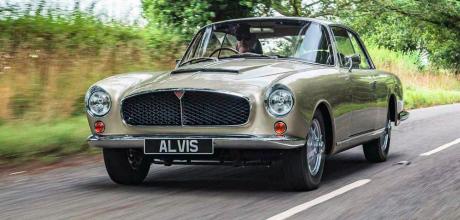The brand new 1967 Alvis 3.0-Litre Graber Super Coupé
Not a restoration but a brand new car: this is the Alvis Graber Super Coupé, and Mark Dixon drives it exclusively for Octane. Photography Reverendpixel.
MEETTHENEWALVIS
ALVIS GRABER SUPER COUPÉ
ALVIS IS BACK IN THE BUILDING
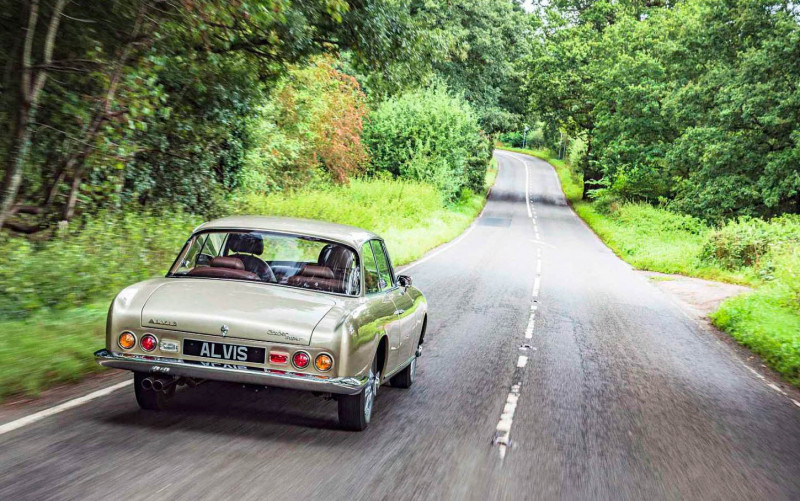
Too cheap? Not a question normally associated with a car that costs £323,000. But spend some time with the Alvis Car Company’s latest ‘continuation’ model – a re-issue of the 1967 Graber-bodied 3 Litre Coupé – and you might come away wondering whether it is actually underpriced. When an Aston Martin ‘James Bond’ DB5 continuation retails at £3.3million, and Jaguar’s latest C-type continuation is said to sell for £2 million, you have to wonder whether Alvis is being too modest with its pricing policy.
‘IN TERMS OF QUALITY, THERE’S LITTLE TO FAULT; THE DOOR SHUTS WITH A PROPER COACHBUILT THUNK’
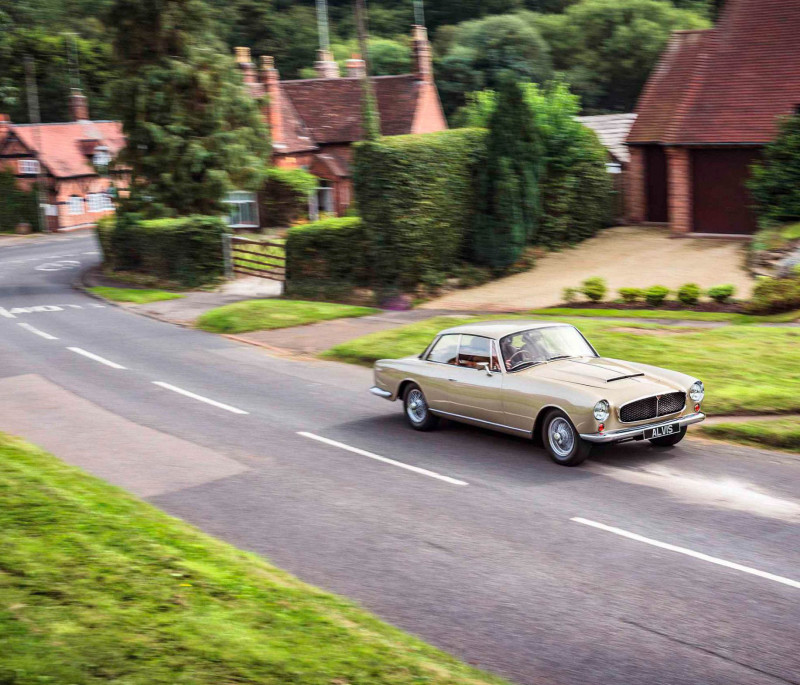
Except that, of course, brand recognition is everything. Everyone’s heard of James Bond and Jaguar; only petrolheads of a certain age are familiar with Alvis. It’s understandable that billionaire real estate tycoons and tech company geniuses who are laying out that kind of moolah will want their piece of automotive jewellery to be recognised by the world at large. If they’ve got it, they want to flaunt it.
True style, though, lies in not looking as though you’re trying too hard – which is why the Alvis Graber Super Coupé would be such a wonderful thing to own and drive. It has superbly understated looks and, with modern fuel injection and various other present-day tweaks to its 3.0-litre straight-six, it’s a decent performer. In fact, Alvis claims that peak power has been increased from the original car’s 130bhp to an impressive 172bhp. That’s quite some improvement.
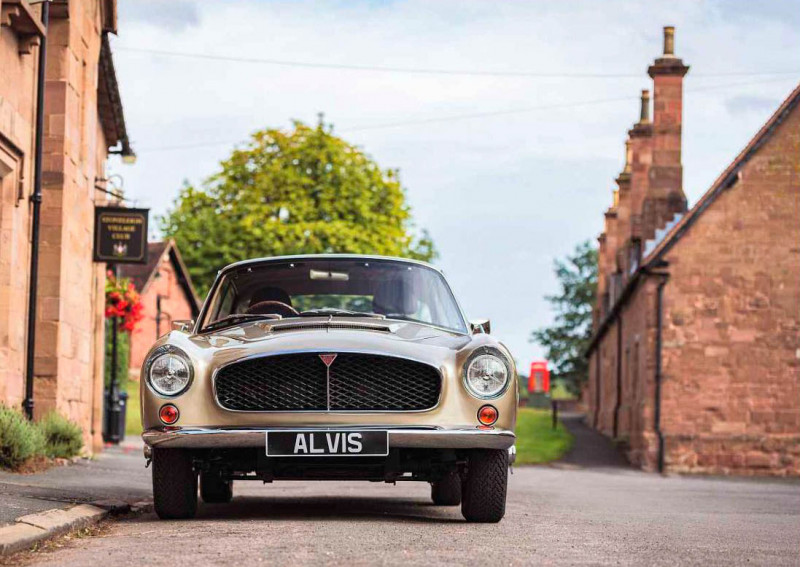
Moreover, unlike a DB5 or a C-type, a Graber-bodied Alvis is pretty much guaranteed to be a unique sight these days. The Swiss coachbuilder clothed a variety of Alvis models in the post-war era, from 1951 TA through to last-of-line TF in 1968, but they were always made in penny numbers; by far the most numerous Graber Alvis was the TD, with 50 examples bodied. There were only six Graber TFs – except that Alvis is now building another four: two Coupes and two Cabriolets.
The continuation car is a doppelganger for an original Graber TF that’s owned by Alan Stote, the chap who bought the moribund Alvis company in 1994 and revitalised it. We ran an interview with him in Octane 81, way back in 2010, and since then he’s taken Alvis from strength to strength. It launched a continuation version of the beautiful pre-war 4.3 Litre in 2011 (available with various coupe and roadster styles) and this has now been followed by the 3 Litre: in essence a TF-spec chassis bodied in Graber Coupe or Cabriolet style, or as a Park Ward Drop Head Coupe. Peter Barford has been the lead engineer for the project and he’s going to ride shotgun as we take chassis 795 out for a test drive on the Warwickshire lanes around Alvis’s Kenilworth base. Both of us are feeling a little nervous, because the car is due to be shipped off to Japan in just a few days and it is literally in brand-new condition. No-one wants to be responsible for stone-chipped paint – or worse.
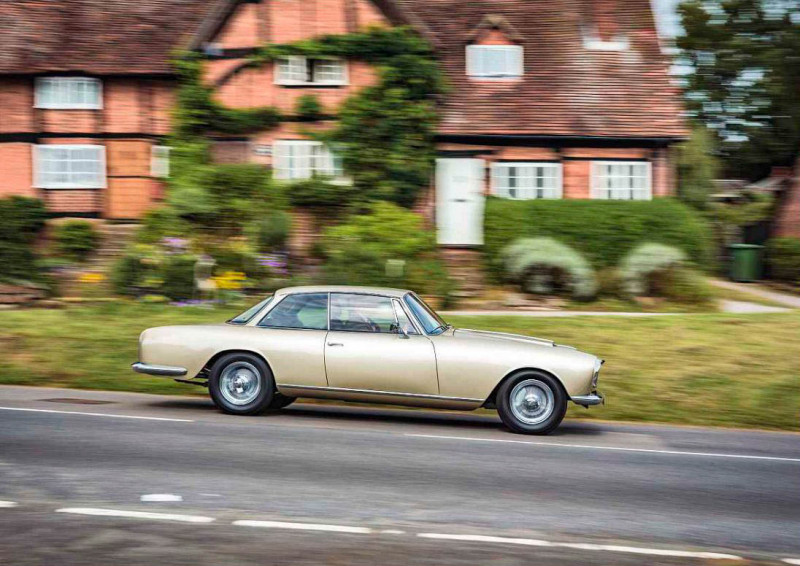
First impressions: it’s long, very long, almost torpedo-like. Graber’s designs for Alvis were some of its most successful, conveying the gravitas of a Bentley without that car’s bulk, and this final evolution looks much more modern than most of its predecessors, with its full-width grille and Frenched lights. There are very few decorative flourishes, save the bootlid mounted ‘Alvis Graber Super’ badges – cast in moulds taken from the original badges on Alan Stote’s car; and the subtle rose-gold metallic paint (which the 1960s Alvis paint chart frankly undersells by naming it Metallic Beige) discreetly emphasises the pencil-thin shutlines and the purity of the unadorned flanks.
Inside, it’s just as handsome. Modern IVA (Individual Vehicle Approval) regulations mean that some of the original car’s switchgear and brightwork has had to be rationalised – today’s bureaucrats demand that nothing with an even remotely hard edge is allowed – but it’s not too obvious. The modern flat-faced warning lights and push switches are the biggest giveaways but I can’t imagine it would be too difficult to swap them out for more period-looking fittings. The modern air conditioning vents fitted between dashboard and centre console look anachronistic but in practice you hardly notice them, and there’s no doubting their usefulness.

In terms of quality, there’s little to fault. Alvis does its trimming in-house, and the leather-faced seats look and feel excellent, complemented by suede-topped wooden door cappings. The drilled-alloy, wood-rimmed steering wheel is a bit blingy compared with the sprung wire-spoked original in Alan Stote’s Graber but is a useful size, being neither too large nor too small, and coupled to electric power-assisted steering.
The door shuts with a proper coachbuilt ‘thunk’ and the clutch, while not heavy, has quite a long pedal travel. The gearbox has that precise, slightly notchy action that’s so typical of a 1950s/60s ZF unit but is actually a modern Tremec five-speeder. ‘We use a six-speed Tremec on our pre-war continuation cars,’ explains Peter, ‘but we concluded that six forward gears are unnecessary on the 3 Litre, because its power band and rev range can cope with five perfectly well.’
The engine is a delight. It’s based on genuine 1960s block and head but with what Alvis coyly describes as ‘Alvis fuel injection’ instead of the SU carburettors used back in the day.
This one has been built to touring spec and could doubtless be tweaked to give even greater power and torque, but it gives more than adequate urge for a gentleman’s (gentle person’s?) carriage like the Graber.
Twirl the deliciously light steering and head out onto some Warwickshire lanes. Two things immediately impress: the engine’s refinement, and the quality of the car’s ride. The latter is up with the best of most 1960s cars’ (if not quite matching a Rover P6’s), being supple yet controlled; the former is harder to describe. Cruise along, and there’s just a hum from the six cylinders up front, with a trace of tappet whisper and – if you have the window cracked open – a hint of induction whistle. Lean on the throttle and the sound level increases in a pleasantly refined manner: there’s no ‘yowl’ or ‘howl’ or ‘snarl’ or other straight-six clich. but instead a crisp yet discreet note that is entirely redolent of a fine piece of machinery being run up to speed. It’s exciting and yet it’s civilised: in short, it’s very Alvis.
This engine isn’t particularly high-revving but it spins up easily, and acceleration feels pretty brisk – probably not that far short of a twin-carb DB6, in real terms. Like the clutch pedal, the accelerator has a lot of travel and you have to press it a long way down to blip the throttle on down-changes: a keen owner might feel inclined to have the linkage shortened. It’s the kind of customisation that Alvis would doubtless be more than happy to carry out.
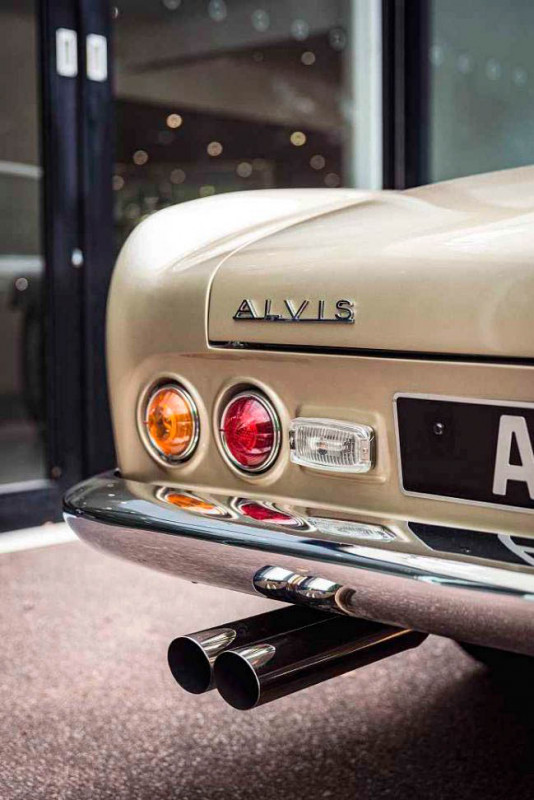
‘We had a combustion engineer analyse the original engine design,’ says Peter, ‘and he was amazed at how little had to be changed to get it to meet modern emissions legislation. We use new pistons to raise the compression ratio to 9:1 and ensure the mixture is fully burnt, but the cylinder block and head are original parts – we have 40 pairs in stock. Same goes for the diff’ and rear axle; they are the kind of major component that rarely fails, so we still have a quantity of new/old stock parts.’
The Alvis platform remained resolutely traditional throughout T-series production – separate ladder chassis, independent front suspension by coil-and-wishbone, live rear axle on semi-elliptics – but there’s nothing wrong with that, and the Graber continuation model is an object lesson in how nicely a car with such underpinnings can ride and handle. This first example had yet to be fine-tuned – there was a noticeable lack of self-centring to the steering at lower speeds – but Peter reckoned some tweaks to the castor angle would sort that.
The addition of electric power steering is a major bonus, too. ‘The cars were originally built with steering boxes but we have converted the set-up to rack-and-pinion, for which we’ve developed electrical assistance in house,’ explains Peter. ‘The amount of assistance is adjustable by turning a switch, and on the next car I’m going to try making it speed-sensitive by getting a sensor to read from the propshaft. All in the Graber tradition of each car being slightly different.’
The stop/start nature of photoshoots is a remarkably good test of how easy a car might be to live with in regular use, so it’s pleasing to report that the Graber Super Coupe seems to have very few flaws. Sometimes it’s reluctant to fire immediately after a hot restart, but Peter thinks this is due to there being not quite enough fuel pressure, and he’s already on the case with a re-map of the engine management system. And the turning circle is pretty wide, which means particular care is needed when exiting tight junctions. But, then, if you want a London taxi, buy a London taxi.
Crucially, the Graber is totally free of the occasional squeaks and rattles that tend to afflict separate-chassis coachbuilt cars. It drives like what it is: a brand-new car. Parked in the chocolate-box-top village of Stoneleigh, the location of many a motoring press photo back in the 1960s and for decades before that, it is in its natural environment. All that’s needed is for the local fox-hunt to come clip-clopping past on big horses and you’d have the stereotypical view of Olde England.
Which is doubtless why the first two of these continuation Grabers have been sold to Japan, the home of Anglophile good taste. In fact, the same Tokyo-based distributor has ordered five continuation cars, at least two of which will be Grabers (this one and a silver drophead). Fittingly, the distributor was Alvis’s agent back in the 1950s and it ordered the continuation cars to mark the 85th anniversary of its parent company, Meiji Sangyo, a supplier of vehicle parts since 1933.What a great idea.
With the Graber safely returned to Alvis HQ, there’s time to see how these cars are put together. The business is split over two sites: a modern showroom and office block, where all the works drawings and car records are kept (Alan Stote will later pull out the original despatch notes for my own 1927 Alvis 12/50), and a more old-fashioned red-brick workshop and stores. In the latter, the chassis for the second continuation Graber rests on stands while its bodywork is sprayed.
‘This chassis and the one under the car you’ve just driven are original 1960s parts, but with modified central crossmembers to take the Tremec gearbox,’ says Peter Barford, who has morphed from this morning’s role as chief engineer and co-pilot to this afternoon’s tour guide. ‘The suspension is standard other than the rear springs each having a leaf removed to account for the alloy bodywork being 15-20% lighter than a regular steel body, and the brakes are Coopercraft discs all round: four-pot at the front, two-pot at the rear. It’s an option that we offer on all the TD, TE and TF cars.’
Such mechanical stuff is bread-and-butter to Alvis, which has been repairing and restoring its cars for decades, but the room next door is where the real magic happens: the shaping of Graber’s gentle curves from scratch. Lord of this domain is Steve Tooth, a time-served Abbey Panels apprentice whose experience stretches back to making bodies for the Jaguar XJ220. Using a traditional wheeling machine, he forms panels from sheet aluminium and checks their accuracy over a wooden buck that’s a lattice-work assembly of 2D profiles slotted together to form a 3D whole.
So far, so conventional in coachbuilding terms; but modern technology has had a big impact here, too. The wooden buck was created from 3D scanning of Alan Stote’s original Graber, and 3D printing was used to create a solid nose section – the most complicated part of the bodywork – over which the front panel could be shaped. The printed ‘master’ wouldn’t stand up to repeated high-volume work but is ideal for a small run of cars such as the Graber.
In officialdom’s eyes, the Graber is a new car and therefore subject to the ULEZ charges that more and more cities are introducing. Fair enough. But at the top of this page there’s a tantalising glimpse inside the storage building where Alvis keeps project and donor cars. Could you ask Alan and his team to rebody one of these as a Graber, and thus retain the car’s original identity? Seems it might be possible.
Then again, if you insist on driving in town, you could just stump up the daily charge for your new Alvis and accept it’s the price you have to pay. Sometimes you have to suffer for your art – and, surely, the Alvis Graber Super Coupe is a genuine work of art.
THANKS TO Alan Stote and Alvis Cars, thealviscarcompany.co.uk.
‘CRUCIALLY, THE GRABER IS FREE OF THE SQUEAKS AND RATTLES THAT TEND TO AFFLICT COACHBUILT CARS’
Above, left and right Buck for complex nose section was 3D printed, but most of the rest was slotted together from 2D wooden sections to make a 3D whole. Facing page and below Beautifully trimmed interior is all done in-house; engine is based on an original 1960s block and head, but with modern fuel injection – and a lot more power. Facing page and above Graber-styled Alvis is brand new, its body recreated from 3D scans taken from Alvis boss Alan Stote’s original example, with paint matched to suit.


